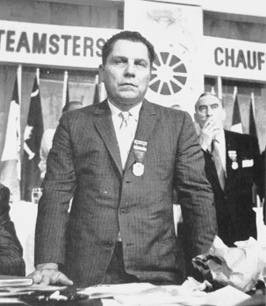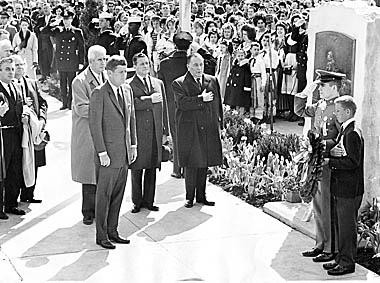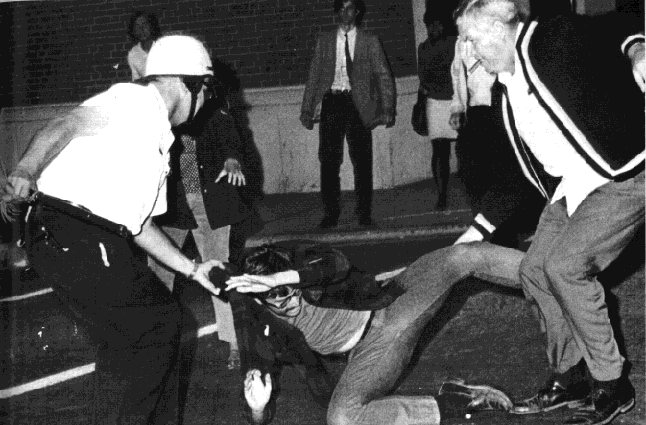 |
"Chicago justice was in a bad way all right. One could see that at a glance: not a single finger of scorn was pointed at the judge for his own nakedness. Indeed the Irony of It All had inspired another amateur to scratch a second portrait: a beat-out, tattered, crooked-limbed wreck, groping in two directions at once and captioned Chicago Justice Deaf Dumb Blind and Falling Apart" (Algren, 181).
Chicago literature, which here we define as literature set in the city, most often written by authors living in or from Chicago, very often relates the fact of such legal corruptions in its depictions of the city. In many instances, the corruption takes place outside of the Prohibition era context, both before and after the period 1920-1933 when drink was illegal.
In Richard Wright's Native Son we see one of the clearest examples of the law turning away from true justice. Bigger Thomas, the book's protagonist, commits the accidental murder of the daughter of one of Chicago's most wealthy-elite families, the Daltons. Realizing that he'll be lynched despite the inadvertent nature of the killing, Bigger dumps the body into the Daltons' coal furnace to dispose of the body. Eventually, it is found and, after a long hunt, Bigger is caught. The District Attorney, Buckley, senses that if he wins the case and convinces the judge to sentence Bigger to death, he will win re-election. So great is the masses' fear of Bigger, and the Black menace he supposedly represents, increasingly rising against their domination by Whites. Buckley is not concerned with the complicated racial dynamics which Wright states as the reason for Bigger's violent outbreak, he is using the boy opportunistically to fulfill his agenda-greater power, wealth, presige. Buckley flagrantly manipulates Bigger into a confession:
"I know how you feel, boy…You're colored and you feel that you haven't had a square deal, don't you? Maybe you've been brooding about this color question a long time, hunh, boy? Maybe you think I don't understand? But I do. I know how it feels to walk along the streets like other people, dressed like them, talking like them, and yet excluded for no reason except that you're black. I know your people." (Wright, 309).
None of this, of course, is sincere-Buckley is simply imagining what he believes would create sympathy between the two until he can press a confession. Bigger, finally, does talk. Buckley's reaction is even more exemplary:
| "'That was not as
hard as I thought it would be,' Buckley said. 'He came through like a clock,' the other man said. Buckley looked down at Bigger and said. 'Just a scared colored boy from Mississippi.'" (Wright, 310). |
Indeed, the only real sympathy that Bigger receives throughout the course of the book is from Max, a Russian immigrant and labor lawyer who works closely with Chicago's Communist Party. Of course, the Communists were still at this time completely ostracized by the public, as Wright notes in the work. Newspaper headlines regularly blame "Reds" for anything they can-they are the city's scapegoats. Bigger cleverly uses this against the public in the murder scheme he constructs. In trying to convince the Daltons that Mary (the daughter he has murdered) is kidnapped, he signs the ransom note "Red." He also arranges some Communist pamphlets he received along his bedside in order to further implicate the Party. He realizes that the Communists are easy targets at the time, that the public is far more likely to take them as the culprit of the murder than they are him, a simple "scared black boy from Mississippi."
Wright, then, seems to create a vast distance between truth and opinion. The characters who know the truth or seek the truth, primarily Max, are held at a distance by the public, they are mistrusted, scapegoated, blamed for the city's problems. Conversely, those figures who are most trusted, the government, represented by the judge in Bigger's trial and the District Attorney, are those that are least concerned with truth and justice, through they are sworn to pursue these very objectives. Instead, they pursue their own selfish motives, and, in so doing, manipulate their subjects, and even warp the thinking of the public for their own benefit.
James T. Farrell's Studs Lonigan trilogy (composed of Young Studs Lonigan, The Young Manhood of Studs Lonigan, and Judgement Day), provides an example of the corruption of multiple levels of government across the Prohibition era and a fictionalization of much of the crime going on at the time. Click here for more information.
|
A picture of Jimmy Hoffa (Carlson). |
Saul Bellow's "Cousins" provides a further example of the interrelationship of law and organized crime. Ijah, the central character in the story and a lawyer with many connections within the seemingly legitimate side of Chicago law, is asked by a cousin to write a letter to a judge-friend of his in order to have the cousin's sentence reduced. At first, we are not given a clear sense of what the cousin, Tanky Metzger, has done. Through the story, it becomes apparent to Ijah that Tanky stands for the still-present connections of corrupt politicians to the mob. "About politicians [Tanky] knew more than I ever would. He knew the real guys; he had done business with the machine people, he had cash-flow relations with them. He could tell me who took from whom, which group owned what, who supplied schools, hospitals, the county jail, and other franchises, made the sweetheart deals. Unless you're a longtime insider, you couldn't find the dark crossings used by the mob and the machine… Were other city or county payrollers moonlighting for the mob? No one proposed to investigate." (Bellow, 202). As we saw in our discussion of the history of Prohibition, this was largely true-hardly anyone exerted an effort to investigate the tenuous ties between organized crime and the law. Here, the truth is beginning to come unveiled for Ijah-he is increasingly realizing that beneath the world of appearances, on which everything seems morally normal, there is a growing darkness. Ijah finds himself increasingly drawn to the dark, amoral side, even equating it with a split in the modern condition (see our Capone Analysis page for further discussion).
|
A picture of Mayor Richard J. Daley with John F. Kennedy (Martin et al). |
Even further past Prohibition, Stuart Dybek's "Blight" recollects the corruption of Mayor Richard J. Daley (the first mayor Richard Daley) in the early 1960s (for an extreme example of Daley's corruption see the Chicago Democratic Convention riot, 1968). The story opens, setting itself clearly in the South of Chicago. "During those years between Korea and Vietnam, when rock and roll was being perfected, our neighborhood was proclaimed an Offical Blight Area" (Dybek, 42). Dybek goes on, suggesting very implicitly that the proclamation was more a means to gain funding which could be stolen than an actual recognition that the area needed to be rebuild or renewed. "Nobody pointed out that you'd never hear a term like that from a public official, at least not in public… Nor did anyone need to explain that Official Blight was the language of revenue, forms in quintuplicate, grants, and federal aid channeled through the Machine and processed with the help of grafters, skimmers, wheeler-dealers, an army of aldermen, precinct captains, patronage workers, their relatives and friends. No one said it, but instinctively we knew we'd never see a nickel" (Dybek, 49). Against this backdrop, the story's characters respond with small acts of rebellion against the Daley establishment. "Finally, I sold Pepper the Chevy for twenty-five dollars. He said he wanted to fix it up. Instead, he used it as a battering ram. He drove it at night around construction sites for the new expressway, mowing down the blinking yellow barricades and signs that read: SORRY FOR THE INCONVENIENCE" (Dybek, 60-1).
|
Chicago riots, 1968 (Whitney et. al). |
Chicago, then, seems to have a long history of political corruption. Many of these stories base themselves around the real historical corruptions occurring across Chicago's history (the Daley machine in "Blight," the connection between city government and Jimmy Hoffa in "Cousins"), while others seem to draw more from the aura that such a history creates, using it for their own fictional and thematic purposes (as with the invented District Attorney in Native Son).



